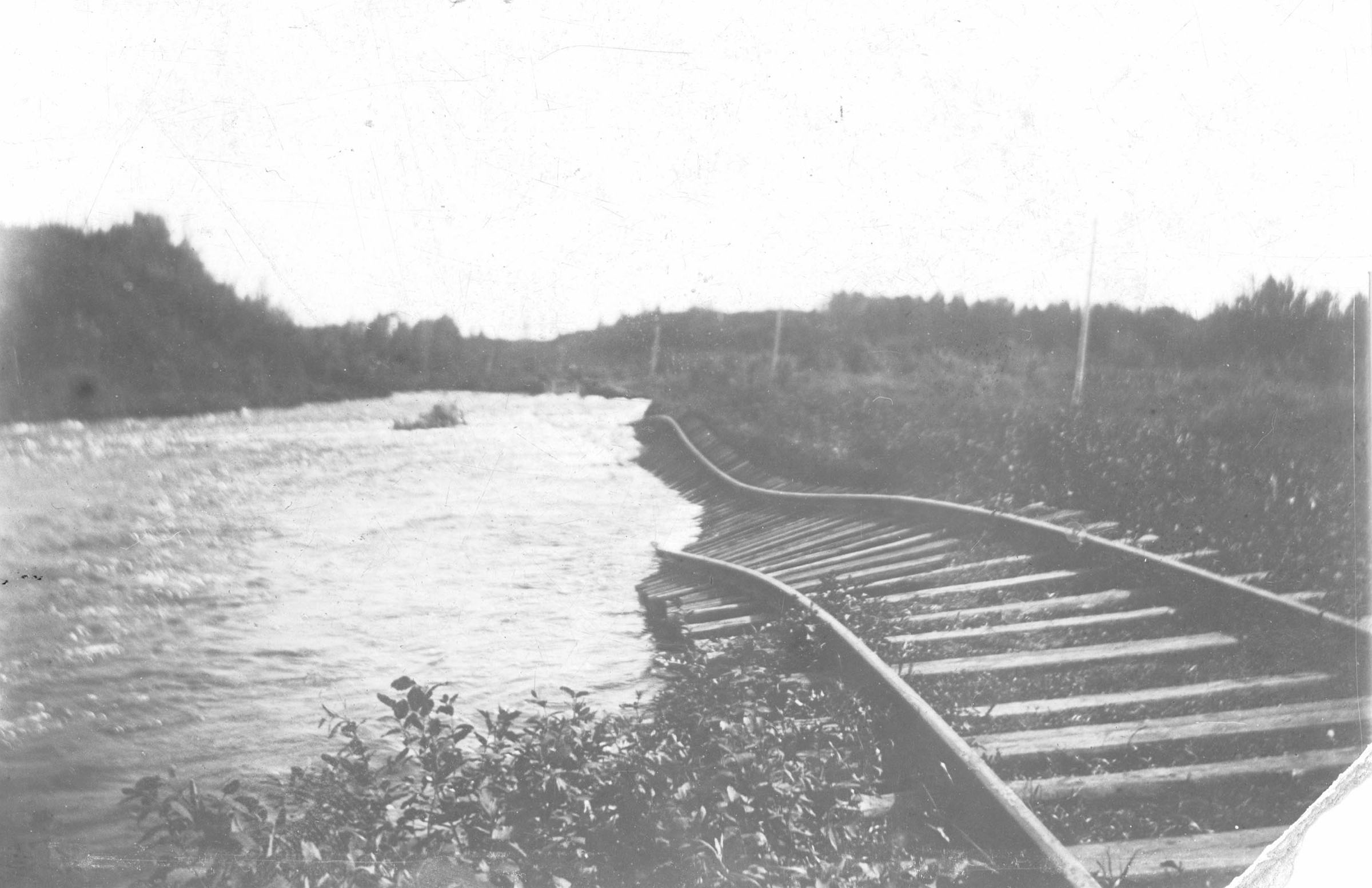This summer has been one of the wettest ones that we have experienced in some time. There have even been claims that we have experienced the wettest July on record.
However, unprecedented weather is actually quite rare in Alberta. Depending upon how far back one goes, a person can almost always find a heavier rainfall, a hotter temperature, a sharper mid-summer frost, and/or a stronger windstorm.
For example, on June 30, 1970, 99.6 mm (3.9 inches) of rain fell in one day. That increased the total rainfall to 244 mm (96 inches) for the month. A great many basements were flooded, several more than once. A section of roof on a building on 51 Ave. collapsed. Many local hillsides began to slump and slide.
In July 1999, 91 mm fell on July 3 and 4 and another 103 mm of rain fell on July 14 and 15. The July monthly total that year was an incredible 274 mm (10.7 inches). Again, some basements flooded repeatedly and low spots became mini-lakes. Local sloughs, creeks and rivers were filled to overflowing.
When the first settlers arrived in Central Alberta, the weather was generally warm with average amounts of rainfall. Nevertheless, there were mid-July frosts in 1883.
In contrast, the 1890s were generally cold and dry. Conditions were so dry that one prairie fire started by Gleichen east of Calgary and did not stop until it hit the Red Deer River. The townsite of Red Deer was nearly wiped out by the blaze.
Consequently, many prospective settlers decided that Central Alberta would be a poor place to farm. Thus, many went to other parts of Canada or the western United States to start their new lives.
The situation changed dramatically in the late 1890s. The region turned warm and green again. So much rain fell in the summer of 1899 that the south span of the traffic bridge across the Red Deer River was swept away by floodwaters. The sawmill in North Red Deer lost almost all of its logs. The local brickyard had its stockpile of clay washed away.
Over the next few years, the weather kept getting warmer and wetter. The countryside became incredibly lush. In 1901, Waskasoo Creek flooded so heavily that the area from 47 St. south to the bottom of the hill became one big lake. The old creek bed on 52 St. near Central School refilled with water. The schoolchildren took pieces of wooden sidewalks and rafted back and forth, almost as far as Gaetz Ave.
It was so warm at Christmastime in 1903 that rain fell on Christmas Eve. There was also still green grass growing in some sheltered places. There is an old photo of the Bower family, out in a hayfield on the south side of Red Deer, in their shirtsleeves in January.
The seemingly wonderful conditions soon became too much of a good thing. Large portions of local fields became submerged and impossible to farm. Crops became so rank and heavy that lodging was a widespread problem. Hence, harvesting became very difficult.
A particular problem from the wet conditions was an epidemic of glanders, sometimes referred to as swamp fever. This bacterial disease claimed thousands of horses.
This cost local farmers a great deal of money, but also claimed the main source of power and transport in the community. Interestingly, Indian ponies and mules seemed largely immune to the disease, so many farmers turned to those animals for their operations. Oxen also became much more common.
Heat and moisture are ideal conditions for mosquitoes. The huge black clouds of these insects became a major problem. Farmers built smudges so that the smoke would give some relief to their animals. Often, people would put mosquito netting on their hats and over their horses, again to keep the bloodthirsty tormentors at bay.
The long warm and wet cycle came to an end in 1905. The winter of 1906-1907 is considered one of the worst winters ever experienced in Alberta. The snows came in September and stayed on the ground until May. In January, temperatures stayed at -40 for weeks on end.
As often happens, the Alberta weather had made a 180° turn over a short span of time.



